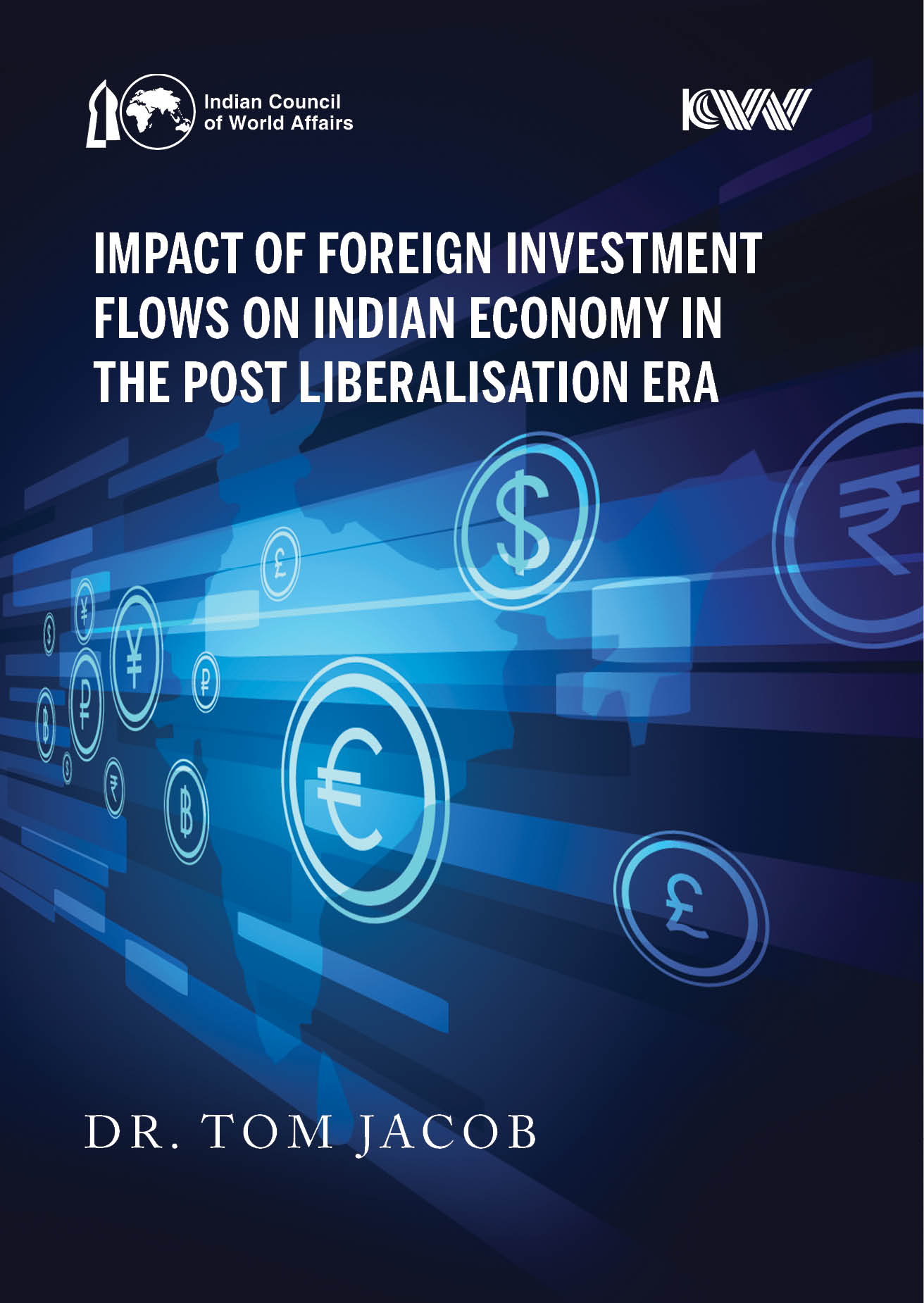Subjects
Impact of Foreign Investment Flows on Indian Economy in the Post Liberalisation Era
Dr. Tom Jacob
Thirty years have passed since the Indian economy began to experience and experiment with foreign investment. Opening the doors of the Indian economy for foreign investment led to a surge in cash inflow here and much has been heard and said - both positively and negatively- about its impact on the economy. This study is an attempt to verify what is heard and explore what is not heard about this impact in the context of the dearth of comprehensive studies, taking FDI and FPI together. Thus, this study attempts to understand how strong the grip of foreign investment is on the Indian economy through its two arms – Foreign Direct Investment (FDI) and Foreign Portfolio Investment (FPI).
The study covers a period of thirty years, from 1991-92 to 2020-21. The data required for the study has been mainly collected from secondary sources and analysed with the help of descriptive and inferential statistics like Auto Regressive Distributed Lag (ARDL) Model, Vector Error Correction Model (VECM) etc. The impact of foreign investment on the Indian economy has been assessed mainly by analysing the relation and the consequent impact of foreign investment on the various macroeconomic variables of the Indian economy under the presumption that the majority of them have a positive relation and impact with the foreign investment, with only mild or moderate negative impact, if any, on the minority of the macroeconomic variables and vice versa.
Since a clear dominance of the positive impact of foreign investment on the various macroeconomic variables of the Indian economy along with only a moderate negative impact via inflation and volatility are found, the study concluded that foreign investment has a positive impact on the Indian economy and it is the outcome of the combined and indistinguishable contributions of both FDI and FPI. However, the study advocates some preference for FDI as it is found that FDI contributes more positively to all the macroeconomic indicators taken for analysis, while FPI contributes less to the economic growth and exchange rate and more to inflation and volatility. The study concludes by reminding and warning that the hitherto exhibited positive impact of foreign investment on the Indian economy may not continue in the future also and hence, points out the urgency of taking enough precautionary measures to overcome the evils associated with foreign investment and to counter and withstand the occurrence of an unforeseen sudden discontinuance or withdrawal of foreign investment from the Indian economy.


 Political Science
Political Science
